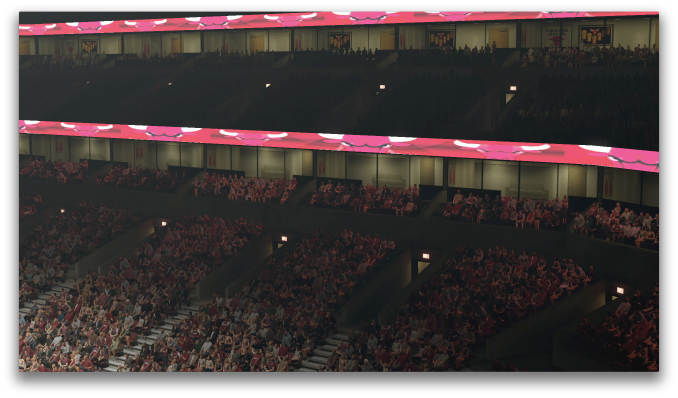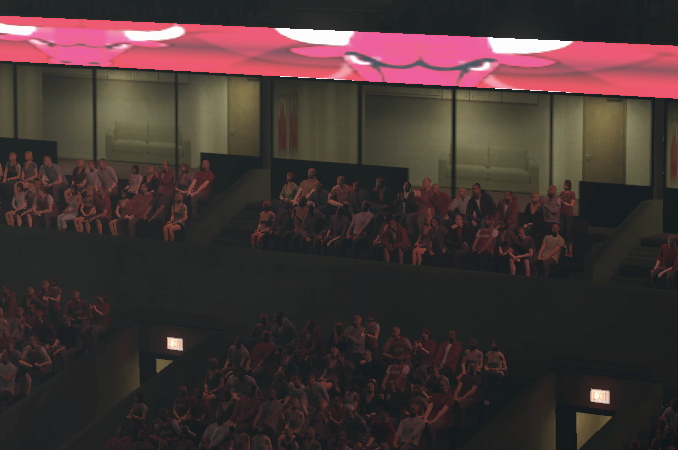The Xbox One - Mini Review & Comparison to Xbox 360/PS4
by Anand Lal Shimpi on November 20, 2013 8:00 AM ESTImage Quality - Xbox One vs. PlayStation 4
This is the big one. We’ve already established that the PS4 has more GPU performance under the hood, but how does that delta manifest in games? My guess is we’re going to see two different situations. The first being what we have here today. For the most part I haven’t noticed huge differences in frame rate between Xbox One and PS4 versions of the same game, but I have noticed appreciable differences in resolution/AA. This could very well be the One’s ROP limitations coming into play. Quality per pixel seems roughly equivalent across consoles, the PS4 just has an easier time delivering more of those pixels.
The second situation could be one where an eager developer puts the PS4’s hardware to use and creates a game that doesn’t scale (exclusively) in resolution, but also in other aspects of image quality as well. My guess is the types of titles to fall into this second category will end up being PS4 exclusives (e.g. Uncharted 4) rather than something that’s cross-platform. There’s little motivation for a cross-platform developer to spend a substantial amount of time in optimizing for one console.
Call of Duty: Ghosts
Let’s start out with Call of Duty: Ghosts. Here I’m going to focus on two scenes: what we’ve been calling internally Let the Dog Drive, and the aliasing test. Once again I wasn’t able to completely normalize black levels across both consoles in Ghosts for some reason.
In motion both consoles look pretty good. You really start to see the PS4’s resolution/AA advantages at the very end of the sequence though (PS4 image sample, Xbox One image sample). The difference between these two obviously isn’t as great as from the 360 to Xbox One, but there is a definite resolution advantage to the PS4. It’s even more obvious if you look at our aliasing test:
Image quality otherwise looks comparable between the two consoles.
NBA 2K14
NBA 2K14 is one cross platform title where I swear I could sense slight frame rate differences between the two consoles (during high quality replays) but it’s not something I managed to capture on video. Once again we find ourselves in a situation where there is a difference in resolution and/or AA levels between the Xbox One and PS4 versions of the game.
Both versions look great. I’m not sure how much of this is the next-gen consoles since the last time I played an NBA 2K game was back when I was in college, but man have console basketball games significantly improved in their realism over the past decade. On a side note, NBA 2K14 does seem to make good use of the impulse triggers on the Xbox One’s controller.


Battlefield 4
I grabbed a couple of scenes from early on in Battlefield 4. Once again the differences here are almost entirely limited to the amount of aliasing in the scene as far as I can tell. The Xbox One version is definitely more distracting. In practice I notice the difference in resolution, but it’s never enough to force me to pick one platform over another. I’m personally more comfortable with the Xbox One’s controller than the PS4’s, which makes for an interesting set of tradeoffs.










286 Comments
View All Comments
3DoubleD - Thursday, November 21, 2013 - link
You sit closer than 7 ft (4 ft optimal) to your 60" TV? This must be in a bedroom, office, or a tiny apartment. I live in what I consider a small apartment and I still sit 10 ft away. Perhaps you just put your couch in the center of the room so that it is really close to your TV? Either way, this is not most people's setup. Average seating distances are far greater than 7 ft. UHD TVs will need to be ~100+" for any benefit to be apparent to regular consumers.You must also live in Europe or Asia to get an internet rate like that. I pay $45/mo for 45/4 Mbit with a 300GB cap - although it's unlimited between 2am - 8am, which I take full advantage of.
nathanddrews - Thursday, November 21, 2013 - link
We've got three rows of seating in our home theater. 115" 1080p projection with seating at approximately 7', 11', and 15'. I choose my seating positions based completely upon my audio configuration which is calibrated to the room's acoustic strengths, not upon one-size-fits-all visual acuity seating calculators. We generally sit in the front row when we don't have guests. It's immersive without being nauseating. Pixels are visible in the back row with good eyesight, so I'm anxiously awaiting a 4K upgrade, but probably not until laser projection becomes affordable.We've got Comcast Business Class 50/10 for $99/mo. No cap and 50/10 are the guaranteed minimum speeds, unlike the residential service which has a cap (sort of) and sells you a max speed instead of a minimum. Comcast BC also has a $59 plan with no cap that is 12/3, but we wanted more speed. Still can't get gigabit fiber... :-(
3DoubleD - Friday, November 22, 2013 - link
Sweet setup! You definitely have the screen real estate and seating arrangement to take advantage of 4k. I'd like a similar setup when I move on from apartment style living to a house. Awesome Internet setup too. I could get unlimited as well, and did for a while, but I realized I could pay half as much and get away without hitting my cap by downloading during "happy hours", but that takes some planning.I've been anxiously waiting for laser projection systems as well... Will they ever come or is it vaporware? Hopefully that is what my next TV purchase will be.
douglord - Thursday, November 21, 2013 - link
more BS from the anti 4k crowd. I'm sitting 8 feet from my TV right now. In fact it's difficult to sit further away in your standard apartment living room. For a 60 inch TV 4k resolution is recommended for anything 8 feet or closer. For a 85 inch TV its 11 feet. For a 100 inch screen its 13 feet.3DoubleD - Friday, November 22, 2013 - link
I'm hardly the anti 4k crowd. I think 4k is great, I just think it is only great when properly implemented. This means that 4k TVs should start at 60", since only very few people sit close enough to begin to see the difference. At 8ft,that is the optimal for 1080p for 60". If you really want to take advantage of 4k you'd sit at 4ft for a 60" set.A5 - Wednesday, November 20, 2013 - link
PS3 didn't launch with DLNA support, either. I'm guessing it will get patched in at some point.As for the rest of it, I'm guessing they made a guess that 4K won't really catch on during the lifespan of these systems, which seems like a fairly safe bet to me.
Hubb1e - Wednesday, November 20, 2013 - link
And with only 16 ROPs Microsoft has trouble even pushing 1080p gaming. It seems that they targeted 720p gaming which is fine with me since most of the time TVs aren't big enough for this to matter. Microsoft did target 4K video though and they designed the video decode blocks specifically to handle this load. It will likely be high resolution but low bitrate video which in most cases is not an improvement over 1080p with high bitrate.piroroadkill - Wednesday, November 20, 2013 - link
2005? Well the consoles then being well specc'd? I disagree, they were mostly pretty great, but I recall very distinctly thinking 512MiB RAM was pretty poor.airmantharp - Wednesday, November 20, 2013 - link
It was horrific, and the effects of that decision still haunt us today.bill5 - Wednesday, November 20, 2013 - link
of course it matters. here xbox one has an edge with an awesome 204 gb/s of esram bandwidth p;us 68 gb/s of ddr bw for a total of 272 gb/s.and yes, you can add them together. so dont even start that noob talk.